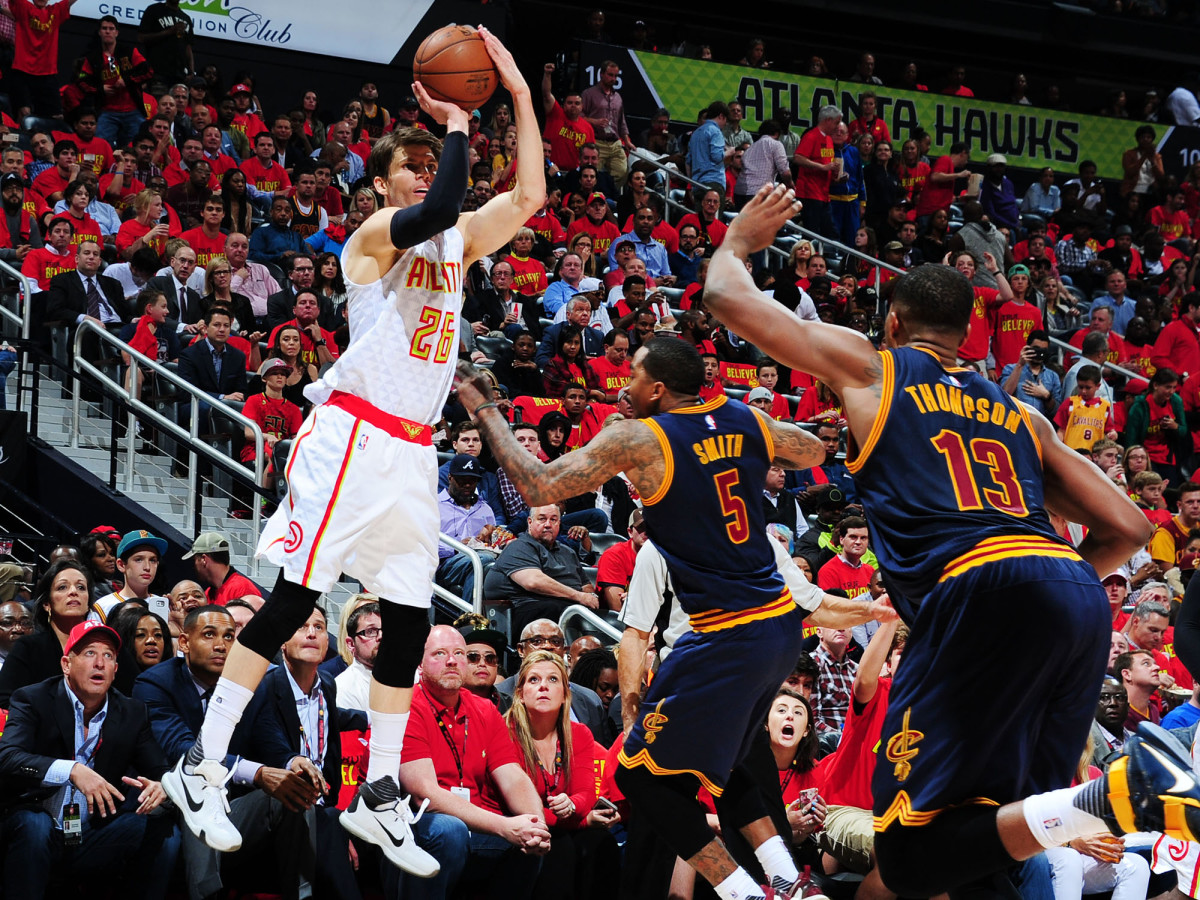What Terrors Might LeBron James's Passing Bring Out In Kyle Korver?

The All-Star in Kyle Korver has faded. Shooting may age well, but shooting at Korver’s level and in Korver’s style requires the kind of burst speed and sudden changes in direction that do not. An ankle surgery here, an elbow surgery there, and a 35-year-old will gradually see the smallest advantages in his game dip. The league catches on. Opponents still respect Korver’s shot—so much so that they continue to prioritize him, to chase him relentlessly. The difference is that Korver can no longer swirl around the court in a way that occupies the entire defense at once. Even a slight decline has narrowed his impact.
Kyle Korver Trade Sends Message To Raptors, Celtics: The Time Is Now
Atlanta and Cleveland derive different meaning from that shift. For the Hawks, Korver’s ebbing game proved a costly departure. Construct a team with enough shooting, spatial intelligence, and passing ability and a prime Korver could create leverage all over the floor. Korver only took around eight shots a game throughout his time with the Hawks, but he carried a weight. Every year it grew heavier. Last season we saw Korver, bothered by the after-effects of injury, drop below 40% in his three-point shooting for the first time in seven years. Atlanta felt the difference, just as it felt the slightest lag in Korver’s movement around the floor. Quietly, the once prolific Hawks drifted into a 22nd-ranked offense.
Even though Korver’s shooting gradually improved over the course of last season, its effect on a roster largely similar to the 60-win model appeared muted. Knocking down open shots was easy. Yet it was Korver’s role in creating those open shots that seemed strained. This is where Cleveland presents an entirely different kind of opportunity. In a certain sense, Korver will never have the chance to do the things for the Cavs that he did for the Hawks. A team with LeBron James, Kyrie Irving, and Kevin Love will never orient its action around Korver’s movement. This is ultimately for the best; a first-rate shooter can settle in with Cleveland as a beneficiary of visionary playmaking. Korver knows how to glide naturally along the three-point arc to create passing angles while James sets up his jump-shooting teammates with a timing and precision unlike any other passer in the league.
Paul Millsap Trade Destinations: Where Should The Hawks Ship Him?
J.R. Smith, whose thumb injury created a more pressing need for a player like Korver, shot 38.1% from three off of passes from James and 34.7% on all other long-range shots this season. For Love, LeBron’s passing was responsible for an even wider margin (43.3% via James, 36.8% otherwise). Channing Frye represents an even more extreme example: a 35.3% three-point shooter (on non-LeBron passes this season) made to shoot 59% by way of potent, concentrated synergy. What terrors might the Cavs bring out in Korver, who will have ample time and open air unlike anything he’s encountered in his career? Smith has played almost 300 fewer minutes than Korver this season. Already he’s attempted more “wide open” threes, according to NBA.com, by virtue of where he plays.

We’ve seen Korver, years ago, work as a standstill shooter at a time when the league didn’t fully understand the value of the three-pointer. This is not that. Korver might play a simpler role, but this Cavs team ranks second in the league in three-point prevalence. Cleveland puts up more threes proportional to its offense than the Warriors or the Blazers or the Celtics, and certainly more than the Hawks. It is a weapon that the Cavs actively pursue; pick-and-rolls are run with the kick-out in mind, and shots in the paint are frequently foregone for the sake of a clearer look from three. Giving a team this good a spot-up ace who can feel his way into the offense is brutal news for the rest of the East. Korver’s presence on the floor will create another impossible dilemma, a safety net for Smith’s streaky shooting, and a fulfillment of the idea behind making Mike Dunleavy (who was shipped out to acquire Korver) a Cavalier in the first place. Godspeed to the help defenders who have to decide in a fraction of a second whether to chase Korver behind a screen or edge in to help cover a LeBron drive.
So much of the democratic offense Atlanta ran over the past few seasons was engineered to mimic the gravity of superstars. The Hawks would have run a more traditional offense if they could, but the talents of the roster didn’t quite align that way. So instead, they endeavored to make quality players into stars by circumstance. Generate enough off-ball movement and you can get Paul Millsap streaking toward the rim with a head of steam. Stagger enough screens and you could get defenses to overreact to Korver, springing openings elsewhere. It took hard work and precision and the perfect combination of players to even attempt to imitate what Cleveland has simply by virtue of being. Welcome, Kyle, to the simpler life of a team that has it all.
